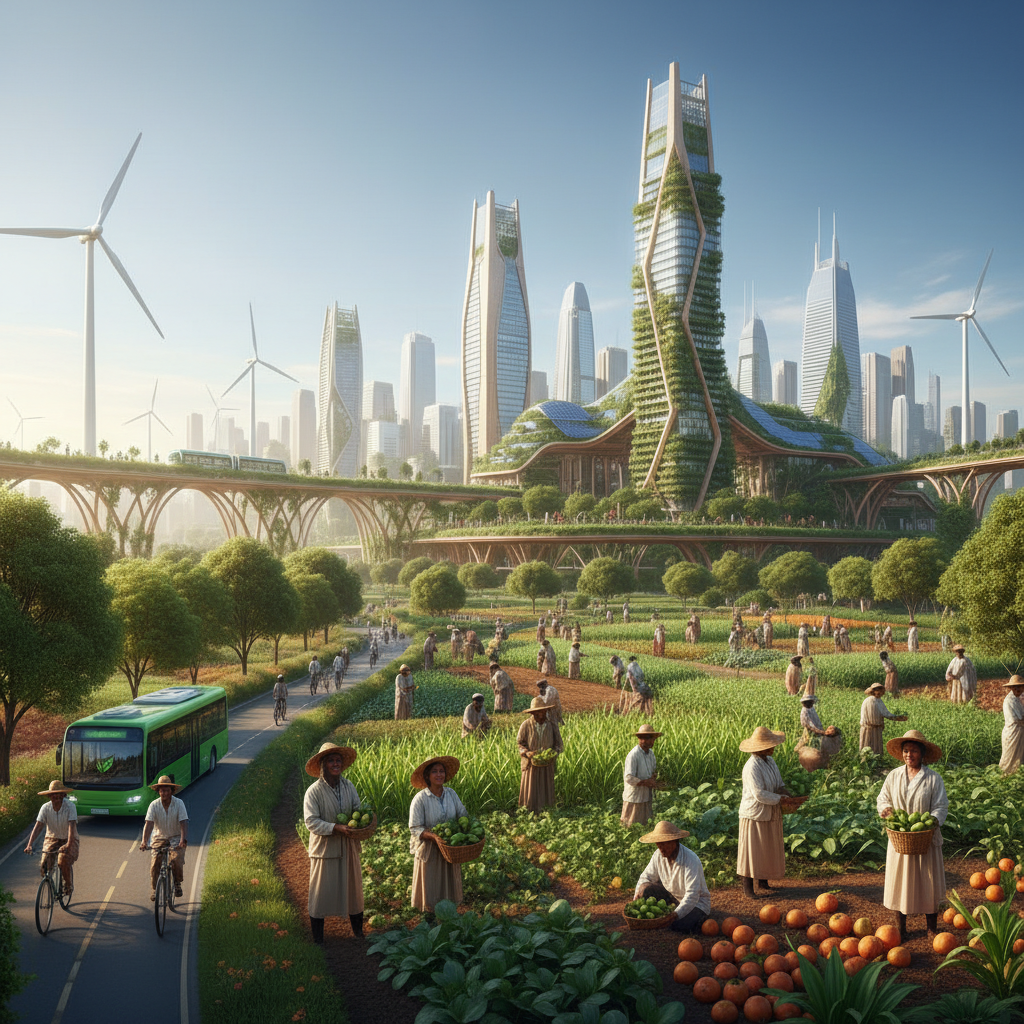Advantages of the green economy for emerging countries
The green economy represents a crucial opportunity for emerging countries to achieve sustainable development by combining economic growth and environmental protection.
This transition contributes to poverty reduction and improves global competitiveness through innovative sectors that promote decent and sustainable jobs.
Creating decent jobs in key sectors
Boosting sectors such as renewable energy and sustainable agriculture creates decent jobs that strengthen the local economy and reduce social vulnerability.
These jobs not only improve family income, but also encourage training and specialization in environmentally friendly activities.
Furthermore, the formalization of green jobs helps guarantee labor rights and fair conditions for the workers involved.
Attracting international investment and financing
The green economy attracts global investors interested in sustainable projects, generating a significant flow of capital to modernize key industries.
This financing allows for the implementation of clean technologies, the optimization of resources, and the development of infrastructure with a lower environmental impact.
In this way, emerging countries improve their position in international markets and foster the technological innovation necessary for green development.
Resource conservation and food security
Natural resource conservation is vital to ensuring food security and the well-being of rural populations in emerging countries.
Sustainable management of water, soil, and ecosystems promotes resilience to environmental threats and climate change.
Preservation of water, soil and ecosystems
Efficient and responsible water use is essential to maintaining healthy ecosystems and supporting sustainable agricultural production.
Soil conservation prevents soil degradation and erosion, ensuring the fertility necessary for future crops and biodiversity.
Protecting ecosystems ensures key environmental services, such as pollination and climate regulation, that sustain agriculture and rural life.
Impact on rural quality of life and agriculture
The green economy improves the quality of life in rural areas through agricultural practices that preserve natural resources and increase productivity.
It promotes sustainable techniques that reduce dependence on chemical inputs, lowering costs and improving farmers' health.
It also promotes rural economic diversification, increasing resilience to market fluctuations and climate change.
Poverty reduction and promotion of social inclusion
Social inclusion is key to combating poverty, ensuring access to green jobs and resources for vulnerable communities.
Green economy-based programs strengthen local capacities, enabling marginalized groups to participate in sustainable productive activities.
This contributes to more equitable development and to improving the socioeconomic conditions of traditionally excluded rural populations.
Challenges in the transition to a green economy
The transition to a green economy faces multiple challenges. challenges essential challenges that must be overcome to achieve sustainable and equitable development.
These challenges include a heavy reliance on traditional economic models and a lack of effective regulatory frameworks to incentivize sustainable practices.
Dependence on traditional economic models
Many emerging countries rely on economies based on carbon-intensive industries, making rapid adoption of green models difficult.
This dependence limits investment in clean technologies and supports economic practices that negatively impact the environment and society.
Overcoming this situation requires transforming productive structures and promoting sectors with low environmental impact to foster real change.
Need for adequate regulatory frameworks
The lack of clear and adequate regulations hinders the development of the green economy by reducing incentives for responsible investments.
It is essential to establish public policies that promote the efficient use of resources and penalize polluting activities to ensure sustainability.
Furthermore, strong regulatory frameworks build trust and commit private and public actors to adopt eco-friendly practices.
Policies and strategies to boost the green economy
For the green economy to thrive in emerging countries, it is essential to implement public policies that promote a favorable and sustainable environment.
These strategies should focus on eliminating harmful practices and fostering innovation, consolidating a responsible and competitive economic model.
Elimination of harmful subsidies and promotion of incentives
Eliminating subsidies that favor fossil fuels is crucial to reducing distortions and enabling a genuine transition to clean energy.
At the same time, incentivizing businesses and farmers to adopt green technologies facilitates the expansion of sustainable practices and improves competitiveness.
Tax and financial incentives for green projects attract investment and strengthen the productive capacity of emerging sectors.
Thus, public policy promotes an economic model that favors environmental protection and equitable social development.
International collaboration and promotion of technological innovation
Cooperation between emerging and developed countries provides access to the resources, knowledge, and financing needed for the green economy.
Technological exchange boosts research and development to create solutions tailored to local and global challenges.
Furthermore, international alliances facilitate the transfer of clean technologies, accelerating productive modernization with a lower environmental impact.
Innovation in action
Multilateral organizations support projects that integrate renewable energy and resource efficiency, demonstrating the power of global collaboration.
These efforts help emerging countries lead the green agenda and strengthen their position in international sustainable markets.






